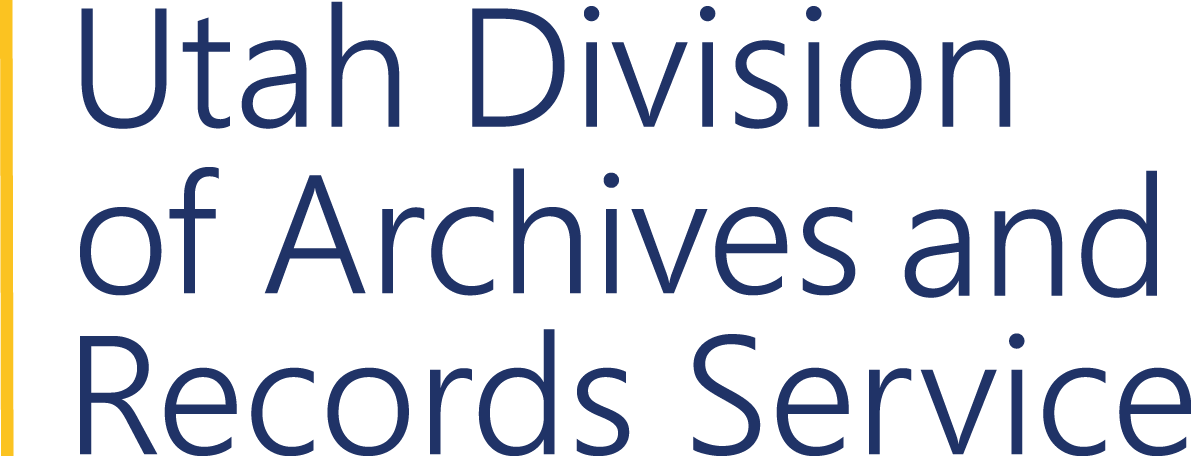PINTO IRON MINING DISTRICT (UTAH). RECORDER
Agency History #3119
CREATION
In 1868 Mormon miners organized the Pinto Iron Mining District in the area of Iron Mountain southwest of Cedar City, to facilitate iron mining in the area. In accordance with established practice, which Congress later enacted into law (Statutes at Large, Treaties, and Proclamations, of the United States of America, vol. XVII, chap. 152), mineral deposits in the public domain were free and open to exploration, and locators of the same had exclusive right of possession. Local mining districts were established to oversee mining operations and record claims. The mountains in the Pinto District contained iron in abundance. The Great Western Iron Mining Company, originally organized as the Union Mining Company, was the primary iron producer in the Pinto District. Their furnaces and other mining operations were centered in Iron City. In 1897 the Utah Legislature enacted a mining law which transferred responsibility for recording claims from mining district recorders to county recorders.
FUNCTIONS
Utah law recognized mining district recorders as public officials and deemed the records in their custody to be official and receivable in the courts of the Territory. Utah law also required that the mining rules and regulations established by each mining district should be recorded by the county recorder in the county where the mining district was located (Compiled Laws of Utah, 1876, Chapter 10). The by-laws for the Pinto Iron Mining District (recorded by the Iron County recorder in Location Notices Book B 1), established that the Pinto Iron Mining District recorder was responsible for recording all mining claims, and that he was required to visit the ground at each claim to ensure that the claim was distinctly marked before recording it. The by-laws also required that the mining district recorder's record books remain in his office and be open for public inspection.
ADMINISTRATION
The mining district recorder was elected from among the mining claim holders in the district for a two year term. District by-laws required him to take an oath and give a $1,000 bond.
The recorder appointed deputies as necessary to assist in carrying out his responsibilities, and he collected fifty cents an hour for inspecting claims. In 1897 the Utah Legislature enacted a mining law which required mining district recorders to deposit their books in the office of the county recorder. County recorders of the respective counties assumed the responsibility for recording claims which had previously been recorded by mining district recorders (Laws of Utah, 1897, chapter 36, "Mining Claims").
| MINING DISTRICT RECORDERS(partial list) | |
| Evan Eddards | 1874-1883 |
| Amos S. Thornton | 1883-1888 |
| James Russell | 1888-1892 |
| Evan Eddards | 1892-1894 |
| James Russell | 1894- |
COMPILED BY: Rosemary Cundiff, November 2001
SOURCES
Bate, Kerry William, "Iron City, Mormon Mining Town," Utah Historical Quarterly, Winter 1982, vol. 50, no. 1, p. 47-58.
Compiled Laws of Utah, 1876, Chapter 10, "Of Mines and Mining."
Laws of Utah, 1897, Chapter 36, "Mining Claims."
Statutes at Large, Treaties, and Proclamations, of the United States of America, vol. XVII, chap. 152. Published by authority of Congress, Boston: Brown, Little and Company
Pinto Iron Mining District (Utah). Recorder, Mining location notices, Utah State Archives, (Series 23961).
Iron County (Utah). County recorder, Mining location notices, Utah State Archives, (Series 6144).
Page Last Updated July 2, 2003.
